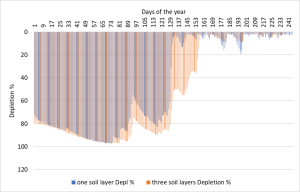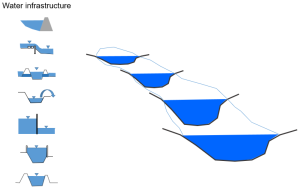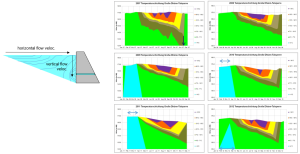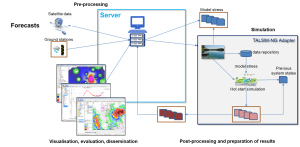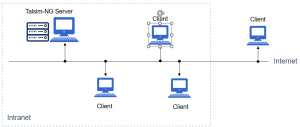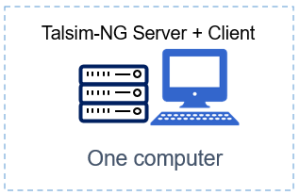Einsatzmöglichkeiten von Talsim-NG: Unterschied zwischen den Versionen
Doeser (Diskussion | Beiträge) Keine Bearbeitungszusammenfassung |
Doeser (Diskussion | Beiträge) Keine Bearbeitungszusammenfassung |
||
| Zeile 92: | Zeile 92: | ||
Client and Server run on the same computer | Client and Server run on the same computer | ||
[[Datei:Emulated Client-Server environment.png|mini]] | [[Datei:Emulated Client-Server environment.png|mini]] | ||
====Participatory modelling / serious gaming==== | |||
Talsim-NG as tool for capacity building | |||
* Topic: Live interaction between water managers | |||
* Tool: Put operators in various positions | |||
- upstream perspective, downstream perspective | |||
- exposes stakeholders to different levels of dependencies | |||
- shows effects with/without data sharing | |||
- demonstrates effects with/without cooperation�- mimics flood / drought events | |||
* Activity: A group of water managers plays at the same time | |||
Version vom 5. Oktober 2022, 17:50 Uhr
Talsim-NG stellt für viele verschiedene Aufgabenstellungen das passende Werkzeug dar:
- Niederschlag-Abfluss-Simulation (sowohl Hochwasser als auch Langzeitszenarien)
- Flussgebietsmodellierung und -bewirtschaftung
- Bewirtschaftung von Speichern, Hochwasserrückhaltebecken, Talsperren bzw. Talsperrensystemen für verschiedene Nutzungen (Wasserversorgung, Hochwasserschutz, Niedrigwasseraufhöhung, Energiegewinnung, Einhaltung von Mindestabgaben, Freizeitnutzung)
- Wassergüteberechnung
- Kopplung von Wassermengen- und Wassergütebetrachtung
- Dimensionierung wasserwirtschaftlicher Anlagen
- Operationeller Einsatz von Talsim-NG für den wasserwirtschaftlichen Betrieb in Verbindung mit einem Monitoringsystem
Ebenso stellt Talsim-NG für viele wasserwirtschaftliche Untersuchungen die passenden Funktionalitäten bereit:
- Interne Zeitreihenverwaltung
- Verwaltung der Simulationen inklusive der Ergebnisse zur Gegenüberstellung
- Langzeitsimulation / Kurzfristprognosen
- Beliebige Anforderung und Ausgabe von Zustandsgrößen
- Berechnung aussagekräftiger Kenngrößen (Bilanzen oder Sicherheiten)
Process-based hydrological modelling
Processes and features:
- Precipitation-runoff component + snow compaction
- Soil moisture and crop water requirements calculation
- Up to 6 soil layers
- Snow simulation
- Hybrid hydrological/hydraulic flood routing
- Non-linear atmosphere-vegetation-soil interface
- Hybrid hydrological/hydraulic flood routing,
- Hydraulic modelling of weirs, diversions, pipes
- Crop water requirements
- Irrigation
- Reservoir operation
- Water quality
- Hydropower
- Conceptual groundwater modelling
- Nested modelling of sub-basins with high spatial resolution
- Generic rule builder for water management options
- Pre-processing and post-processing
- Multicriteria optimization
- Time series manager
- Project and scenario manager
- Client-Server architecture
Gridded or watershed oriented approach
Talsim-NG can be used for both gridded or watershed oriented concepts
 |
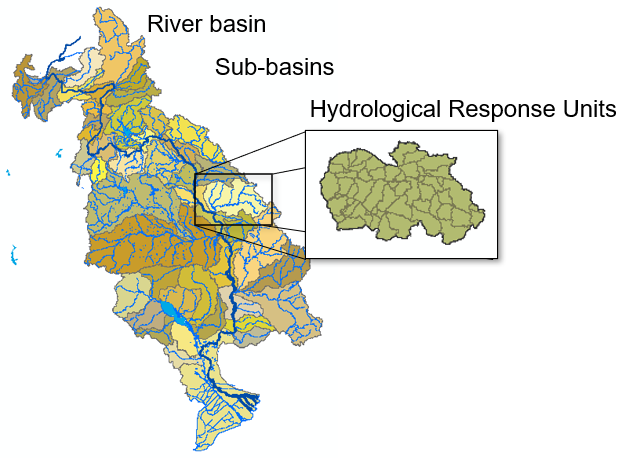
|
Atmosphere / Vegetation / Soil Interface for Crop Water Requirements and Irrigation
Linkage of flow components
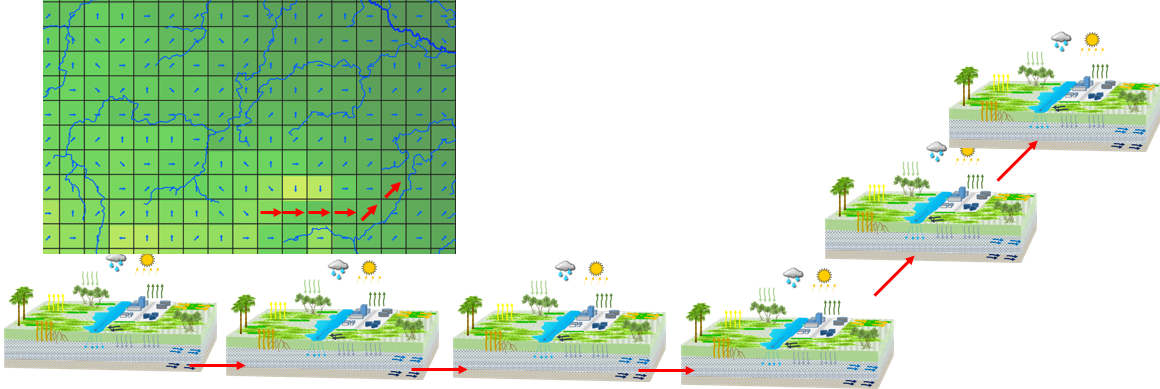 Surface and sub-sufrace flow components between elements are interconnected. If soil downstream is saturated, flow from the upstream cell is impeded:
Surface and sub-sufrace flow components between elements are interconnected. If soil downstream is saturated, flow from the upstream cell is impeded:
- Backwater effects
- Surface flow accumulates from element to element
Nested modelling
A model within a model!
If necessary, sub-basins can be simulated with different resolutions and levels of detail within a large river basin model.
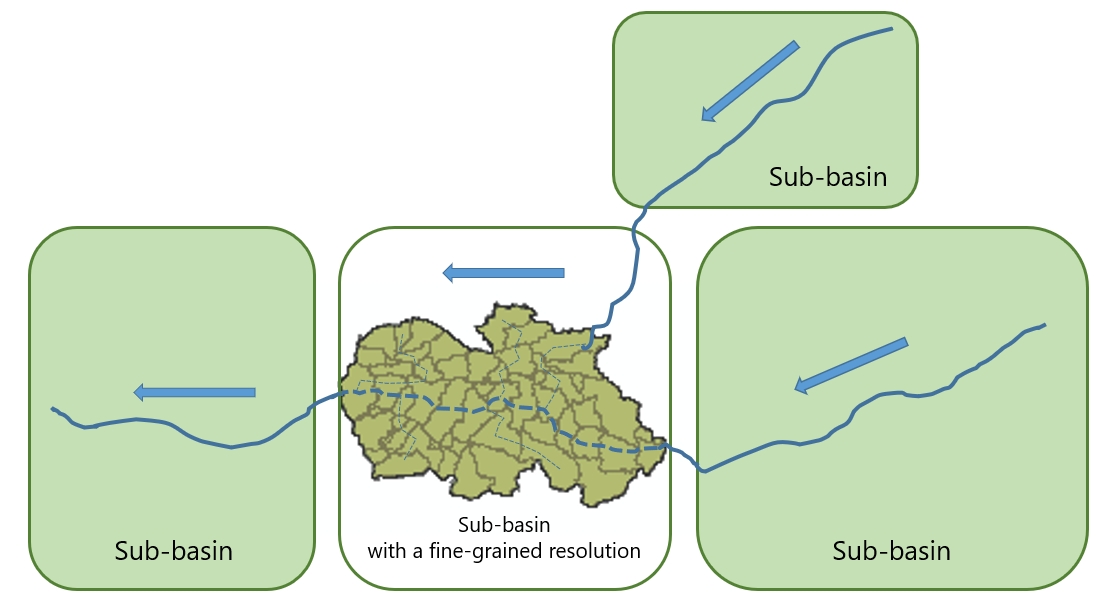
Crop water requirements
Comparison CropWat (FAO) vs. Talsim-NG
Hybrid hydrological / hydraulic modelling
Water quality and stratification modelling
Talsim-NG in operational mode
Automation from data retrieval to sending e-mails when operational simulation runs are required
Client-Server environment
Emulated Client-Server environment
Emulated client-server environment Client and Server run on the same computer
Participatory modelling / serious gaming
Talsim-NG as tool for capacity building
- Topic: Live interaction between water managers
- Tool: Put operators in various positions
- upstream perspective, downstream perspective - exposes stakeholders to different levels of dependencies - shows effects with/without data sharing - demonstrates effects with/without cooperation�- mimics flood / drought events
- Activity: A group of water managers plays at the same time
